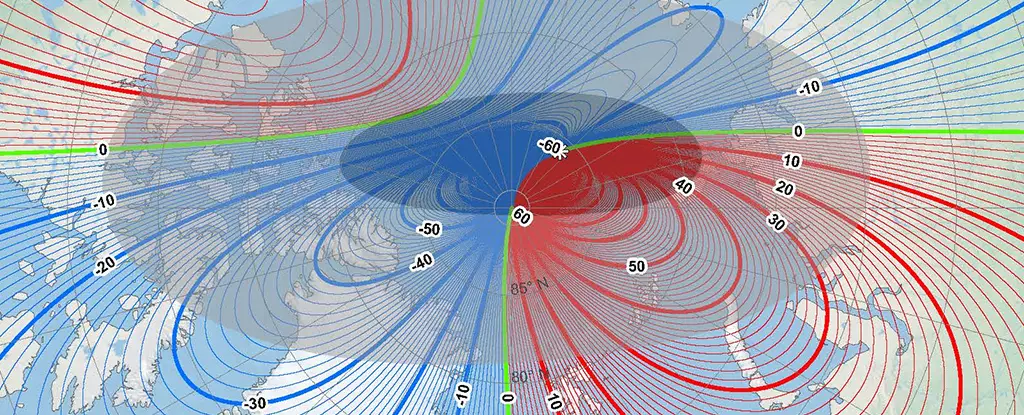As the year draws to a close, a significant event in the realm of navigation systems occurs. The magnetic North Pole is shifting, necessitating updates to the navigation systems utilized by mariners, aviators, and even Santa Claus’s sleigh. The collaborative effort of the US National Oceanic and Atmospheric Administration (NOAA) and the British Geological Survey (BGS) has culminated in a new World Magnetic Model (WMM), an essential tool for determining the precise location of the magnetic North Pole. This recalibration process, conducted every five years, addresses the constant movement of Earth’s magnetic field, which contrasts with the fixed geographical North Pole situated at the planet’s rotational axis.
The magnetic North Pole, identified as the point where the Earth’s magnetic field is directed vertically downwards, is in constant flux partly due to the dynamic nature of the molten iron and nickel that compose the Earth’s outer core. Over time, these magnetic fields become misaligned, which can severely affect navigation methods that rely on accurate magnetic readings. This ongoing movement has profound implications for navigation tools like compasses, necessitating precise knowledge of where to find these magnetic points.
Recent research has revealed that the behavior of the magnetic North Pole is unprecedented in the context of recorded observations. As noted by William Brown, a global geomagnetic field modeller at BGS, magnetic North had been migrating slowly around the Canadian region since the 1500s. However, in the last two decades, this gradual movement has quickened, steering increasingly towards Siberia. Previously, the speed reached 50 kilometers per year, but this pace has experienced an astonishing deceleration to around 35 kilometers per year recently. Notably, this represents the most significant reduction in speed ever documented in magnetic North’s history.
An interesting hypothesis explains this phenomenon: two enormous magnetic lobes located beneath Canada and Siberia may be exerting influence over the shift in the magnetic pole. Their interactions impact not only the Earth’s magnetic field but also seasonal shifts that can lead to emergency updates, compelling researchers to adjust the magnetic model outside the traditional update cycle.
With the recent update of the WMM, navigational accuracy has undergone a notable enhancement. The new model offers a resolution ten times greater than previous versions, allowing users to pinpoint the magnetic North Pole with substantially improved precision. While the traditional WMM had a spatial resolution of approximately 3,300 kilometers, the new model’s refinement brings this down to around 300 kilometers in proximity to the equator.
The implications of this increased accuracy are significant. For example, if a traveler journeys straight from South Africa to the UK, disparities arising from the older model could lead to a navigational error of approximately 150 kilometers by the end of the trip. Such variance could have detrimental consequences for industries that depend on precise navigation, such as shipping, logistics, and transportation services. Government bodies and logistical organizations must promptly integrate this upgrade to facilitate accurate mapping.
Attention must also be paid to the consistency in navigation technologies that users rely on daily. Fortunately, the transition to the new WMM will be seamless for the vast majority of people, as updates to devices—such as smartphones and satellite navigation systems—will occur automatically, ensuring that individuals won’t have to navigate the complexities of manual adjustment.
The story of the magnetic North Pole dates back to 1831 when Sir James Clark Ross first documented its location in northern Canada. Over subsequent decades, advancements in technology, including ground measurements and satellite readings, have refined researchers’ abilities to track and understand the movement of the magnetic pole. The continuous efforts to map this elusive point reflect the significant contributions of scientists and researchers dedicated to understanding the complexities of geomagnetism.
As we venture into the future, an awareness of the dynamic characteristics of Earth’s magnetic field is essential. Whether utilized by mariners, pilots, or even jolly old St. Nicholas himself, the precise knowledge of magnetic North remains crucial for safe navigation on a global scale. The latest updates in the World Magnetic Model underscore the essential interplay between scientific research and practical application, bridging generations and technologies in our quest for navigational accuracy.

Leave a Reply